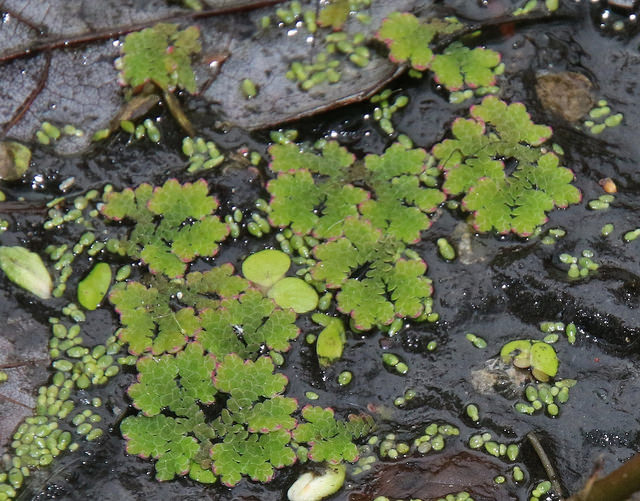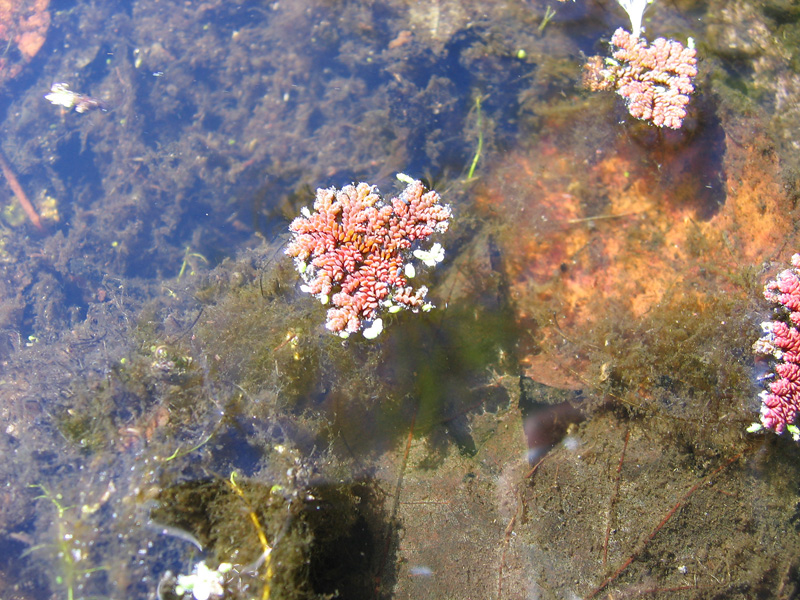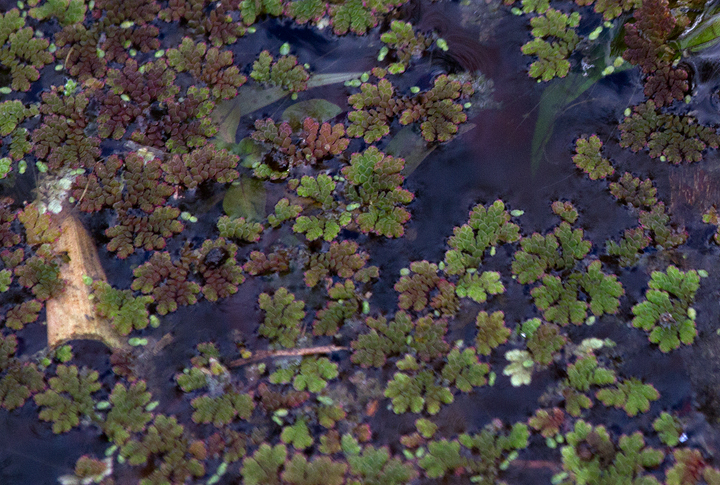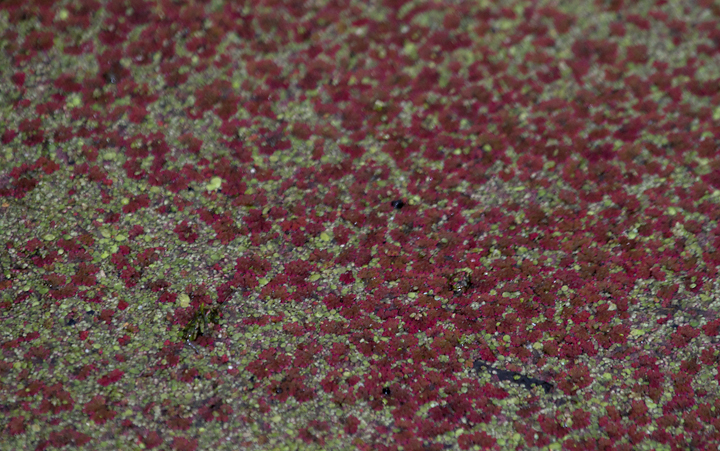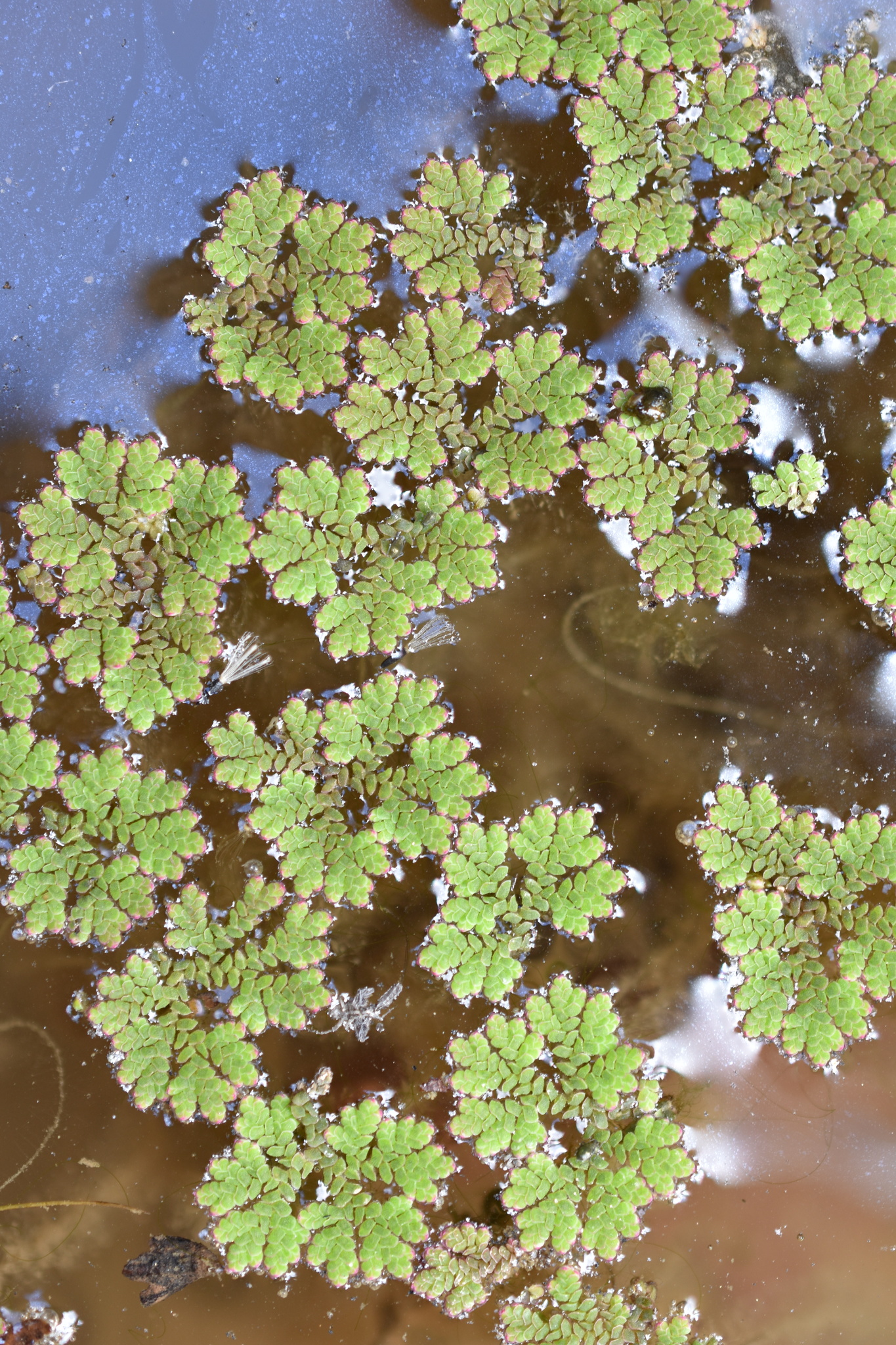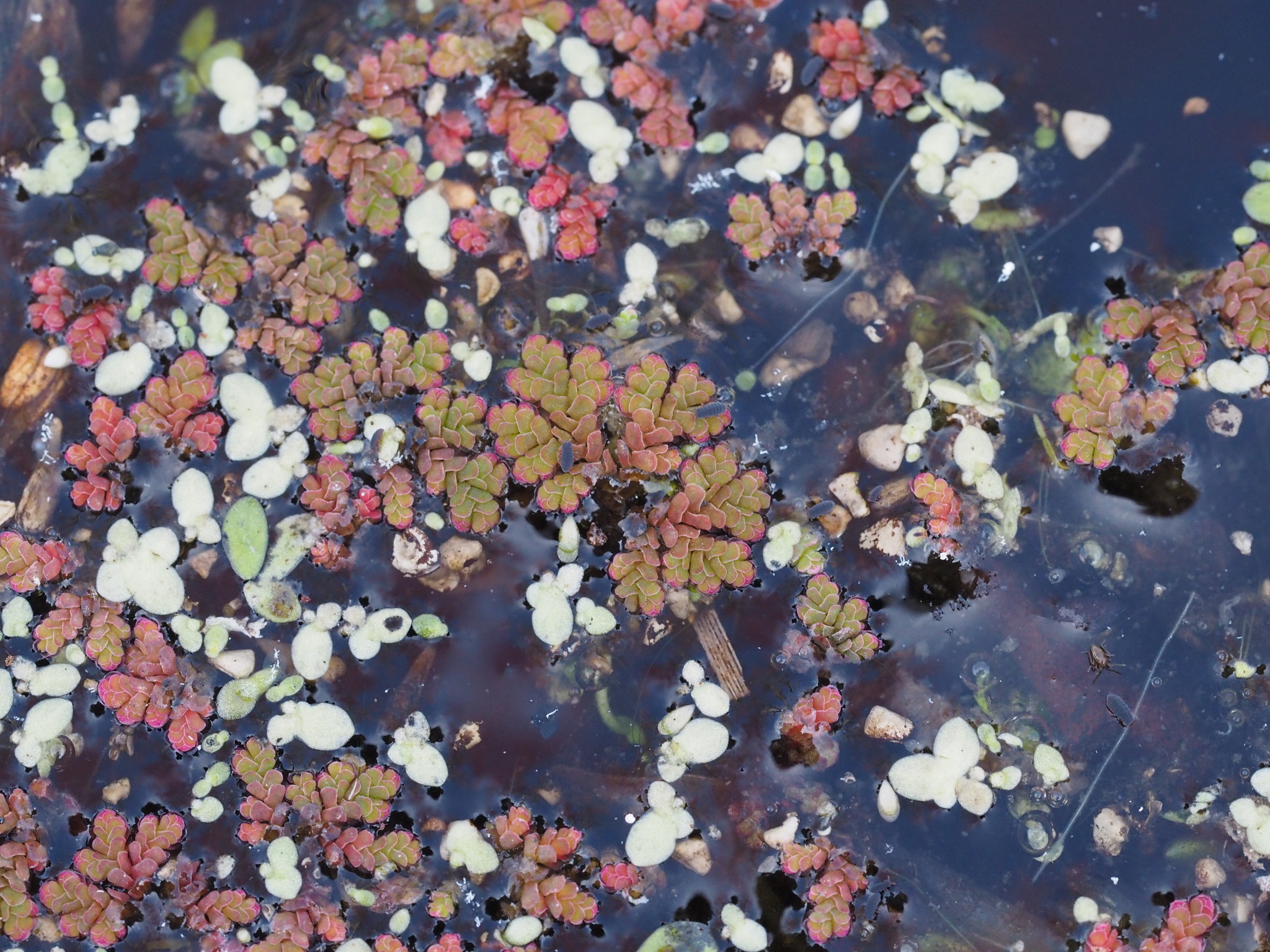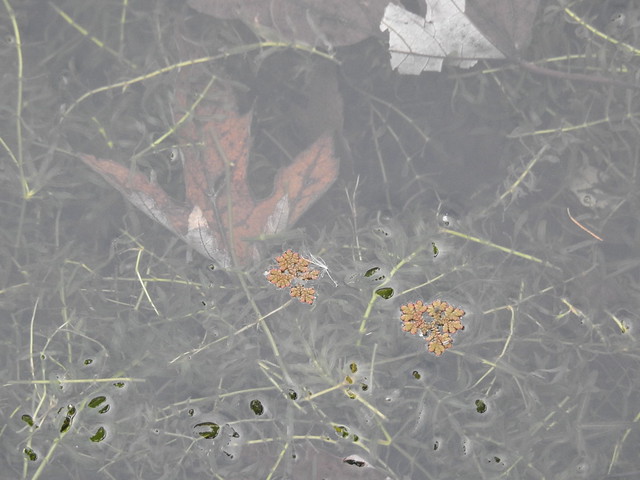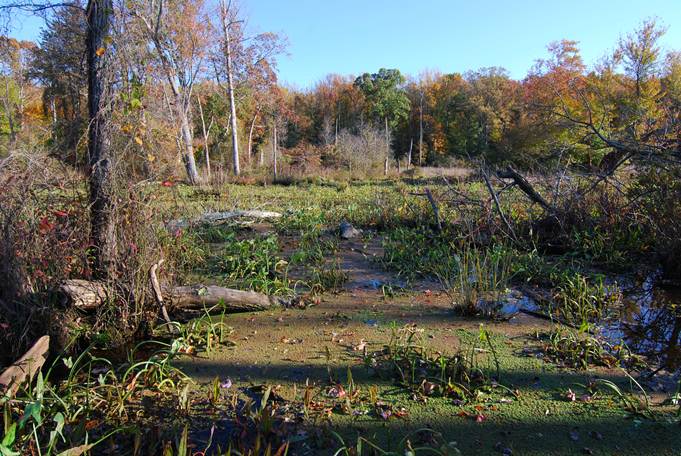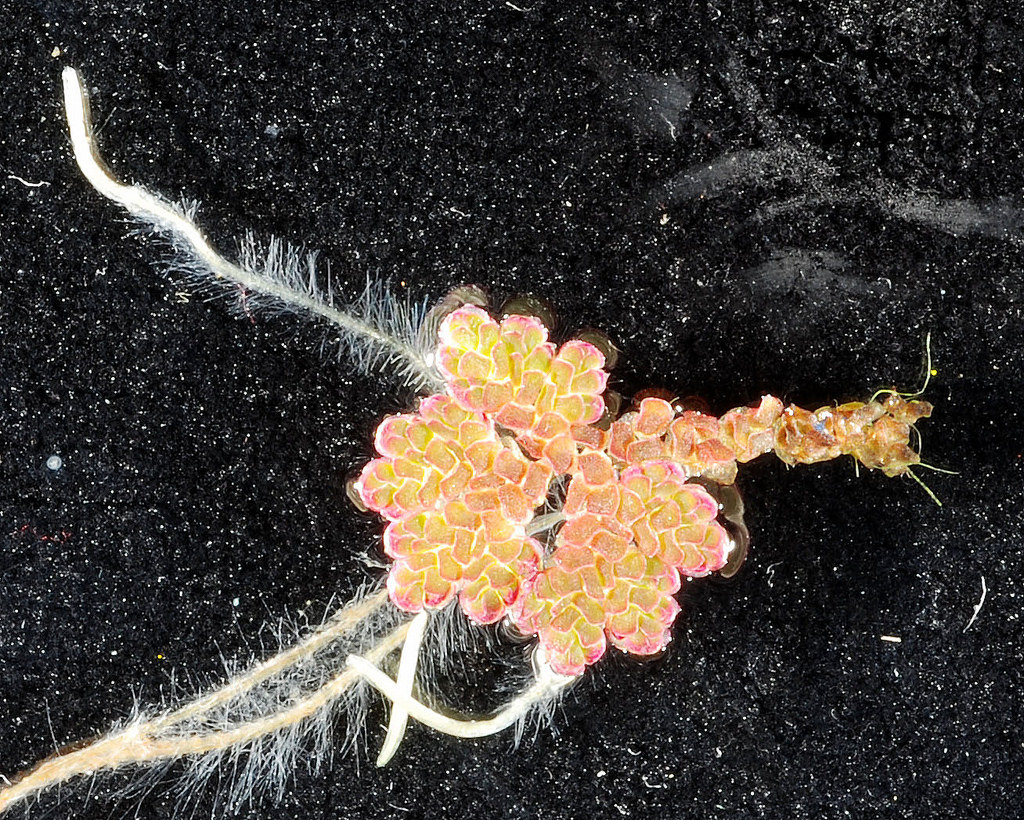Map Snapshot

















110 Records
Status
The taxonomy of Mosquitoferns (Azolla spp.) is in a state of uncertainty. The species found in Maryland has historically been called Azolla caroliniana. However, a study by Evrard & Van Hove (2004. Syst. & Geogr. Pl. 74: 301–318) found that the name Azolla cristata Kaulf. is better applied to this species. Few subsequent authors have followed this treatment and the name Azolla caroliniana is still widely used. In addition, most specimens (and all field photos) of Azolla lack the characteristics necessary for confident identification. Although only one species has been reported from Maryland, detection of other species is unlikely without intentional and careful investigation.
Where To Find
Carolina Mosquitofern can be found floating on the surface of freshwater ponds and wetlands. It can often be found at the margins of lakes mixed with duckweeds.
Relationships
Has a symbiotic relationship with Mosquito Fern Cyanobacterium.
Seasonality Snapshot
Source: Wikipedia
| Azolla cristata | |
|---|---|

| |
| Azolla cristata (reddish) and Lemna (green) in a small pool | |
| Scientific classification | |
| Kingdom: | Plantae |
| Clade: | Tracheophytes |
| Division: | Polypodiophyta |
| Class: | Polypodiopsida |
| Order: | Salviniales |
| Family: | Salviniaceae |
| Genus: | Azolla |
| Species: | A. cristata
|
| Binomial name | |
| Azolla cristata | |
| Synonyms[2] | |
|
Synonyms of A. cristata include: | |
Azolla cristata , the Carolina mosquitofern,[3] Carolina azolla or water velvet, is a species of Azolla native to the Americas, in eastern North America from southern Ontario southward, and from the east coast west to Wisconsin and Texas, and in the Caribbean, and in Central and South America from southeastern Mexico (Chiapas) south to northern Argentina and Uruguay.[4]
It is a freshwater aquatic fern, with scale-like fronds 5–10 mm long, green to reddish, most often reddish in strong light and in winter. They are covered in tiny protuberances called trichomes that give it the appearance of velvet.[5][6] It is able to fix nitrogen from the air by means of symbiotic cyanobacteria. It can survive winter water temperatures of 5 °C (41 °F), with optimum summer growth between 25–30 °C (77–86 °F).[7]
 |
 |
Identification
[edit]The only sure method of distinguishing this species from Azolla filiculoides is to examine the trichomes on the upper surfaces of the leaves. Trichomes are small protuberances that create water resistance. They are unicellular in A. filiculoides but septate (two-celled) in A. cristata.[2]
Name
[edit]This species has long been known under the name Azolla caroliniana. However, research by Evrard and Van Hove[2] found that the type specimen of A. caroliniana actually consists of plants of Azolla filiculoides and so the name caroliniana has always been improperly applied to this species.[citation needed]
Cultivation and uses
[edit]Azolla cristata is of commercial importance in cultivation in southern and eastern Asia as a bio-fertilizer, valued for its nitrogen-fixing ability, which benefits crops such as rice when the fern is grown under it and reduces the need for artificial fertilizer addition.[7] The thick mat of fronds (up to 4 cm thick[5]) also suppresses weed growth.[7] Harvested fronds are also used as a food for fish and poultry.[7] It is also often used as a floating plant in both coldwater and tropical aquaria, as well as in outdoor ponds; it is propagated by division.[8]
References
[edit]- ^ "NatureServe Explorer 2.0 Azolla caroliniana Eastern Mosquito Fern". explorer.natureserve.org. Retrieved 5 October 2020.
- ^ a b c Evrard, C.; Van Hove, C. (2004). "Taxonomy of the American Azolla Species (Azollaceae): A Critical Review". Systematics and Geography of Plants. 74 (2): 301–318.
- ^ NRCS. "Azolla caroliniana". PLANTS Database. United States Department of Agriculture (USDA). Retrieved 18 March 2016.
- ^ "Azolla caroliniana". Germplasm Resources Information Network. Agricultural Research Service, United States Department of Agriculture. Retrieved 12 January 2018.
- ^ a b Flora of North America: Azolla cristata
- ^ Aquatic Plant Information System: Azolla Archived 2007-06-10 at the Wayback Machine
- ^ a b c d NESAC: Package of Practice for Azolla
- ^ Hiscock, P. (2003). Encyclopedia of Aquarium Plants. Interpret Publishing, United States and Canada ISBN 0-7641-5521-0.
External links
[edit]- The Azolla Foundation
- Azolla Philippines A website dedicated to the distribution of Azolla for propagation as alternative livestock feed.
